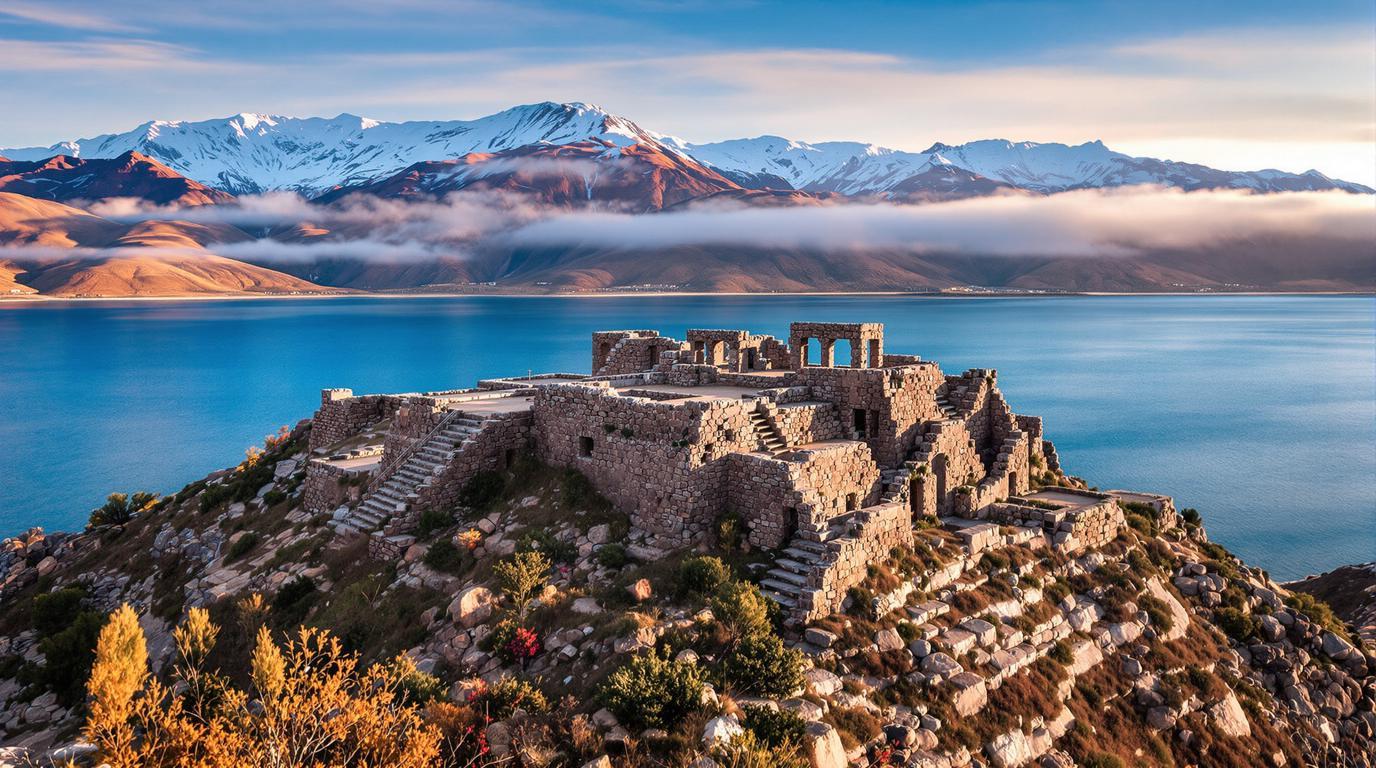The wooden dock creaks beneath my feet as the boat pulls away from Copacabana, leaving Bolivia’s tourist-friendly shore behind. Ahead lies Isla del Sol – a sacred sliver of land where Incan creation myths were born and where time seems to have forgotten its steady march forward. Unlike its bustling counterparts across Lake Titicaca, this island whispers its secrets only to those willing to listen.
Where ancient pathways weave stories of the sun god
According to Aymara legend, the island emerged from darkness when the sun god Inti rose from Lake Titicaca’s sapphire waters. Today, the 9.6 km-long island stands as a living museum where pre-Columbian ruins share space with small communities virtually untouched by modernization.
“We don’t measure time by clocks here, but by the sun’s position and the seasons,” explains Elena, an elderly weaver I meet along the Escalera del Inca – the ancient stone staircase connecting the shoreline to Yumani village. “Our ancestors walked these same paths to worship the sun. Now we welcome visitors who seek to understand our ways.”
With no motorized vehicles and limited electricity, the island offers something increasingly rare in our connected world – genuine disconnection with a side of spectacular panoramas. Yet surprisingly, it remains overshadowed by this hidden Greek island just 23 kilometers from Athens, despite offering equally remarkable spiritual significance.
Discovering sanctuaries hidden between sky and water
The labyrinth that speaks to ancient souls
In the northern reaches, Chincana (“the labyrinth”) sprawls across a hillside – a stone puzzle of doorways, niches, and passageways where Inca priests once prepared offerings. I arrive at sunrise, when the ruins glow amber against the lake’s horizon. Unlike Peru’s overrun Incan sites, I share this moment with just three other visitors and a family of grazing alpacas.
The complex’s mysterious doorways frame Lake Titicaca perfectly, creating natural “windows” that archaeologists believe aligned with celestial events. Standing in the temple ruins as golden light floods the stone chamber feels like stepping through time itself.
The forgotten beach of Challapampa
Following a shepherd’s casual directions, I veer off the main trail and descend through terraced fields to discover a crescent-shaped beach where crystal waters lap against smooth stones. A handful of local children practice launching reed boats while their grandfather mends fishing nets nearby.
This sheltered cove, reminiscent of this Caribbean island with just 2,100 residents but with Andean architecture, offers a perfect midday respite. The water, though bracingly cold at 12,500 feet elevation, holds a silky quality that locals attribute to mineral properties.
Tasting traditions preserved at the roof of the world
In Yumani’s sole restaurant without a name (look for blue doors beside the community garden), Doña Francisca serves trucha al ajillo – local trout seared with garlic, native herbs and amaranth. The fish, caught that morning and served on earthenware plates, comes accompanied by chewy chuño – freeze-dried potatoes created using techniques dating back thousands of years.
“Our cooking hasn’t changed in generations,” Francisca tells me as she places steaming mugs of coca tea on the table. “The ingredients come from our gardens or the lake itself. Nothing more is needed.” The island’s isolation has preserved culinary traditions lost in many parts of Bolivia, creating a living food museum above the clouds.
Navigating sacred spaces with respect and timing
Boat rhythms and island flow
Boats from Copacabana depart at 8:30am and 1:30pm only, with return journeys at 10:30am and 3:30pm. Missing the last boat means an unplanned overnight stay, so time your exploration carefully. Many visitors mistake Isla del Sol for a day trip, but its true character emerges at twilight when day-trippers depart.
Sacred slumbers
For accommodations, avoid the concentrated lodgings near the southern port. Instead, seek out family-run homestays in Challapampa village, where $15-20 secures a simple room with dinner and breakfast included. Bring cash (no ATMs) and a headlamp for navigating after dark, similar to visitors exploring this alpine lake nestled at 2,414 meters with a sacred chapel.
Carrying echoes of ancients into present day
As twilight drapes purple shadows across Lake Titicaca, I watch stars emerge with uncommon clarity in the thin air. This island exists in multiple dimensions – as archaeological treasure, as living indigenous community, and as spiritual touchstone. Here, the veil between past and present feels gossamer-thin, a reminder that some places retain their power despite centuries of change.
